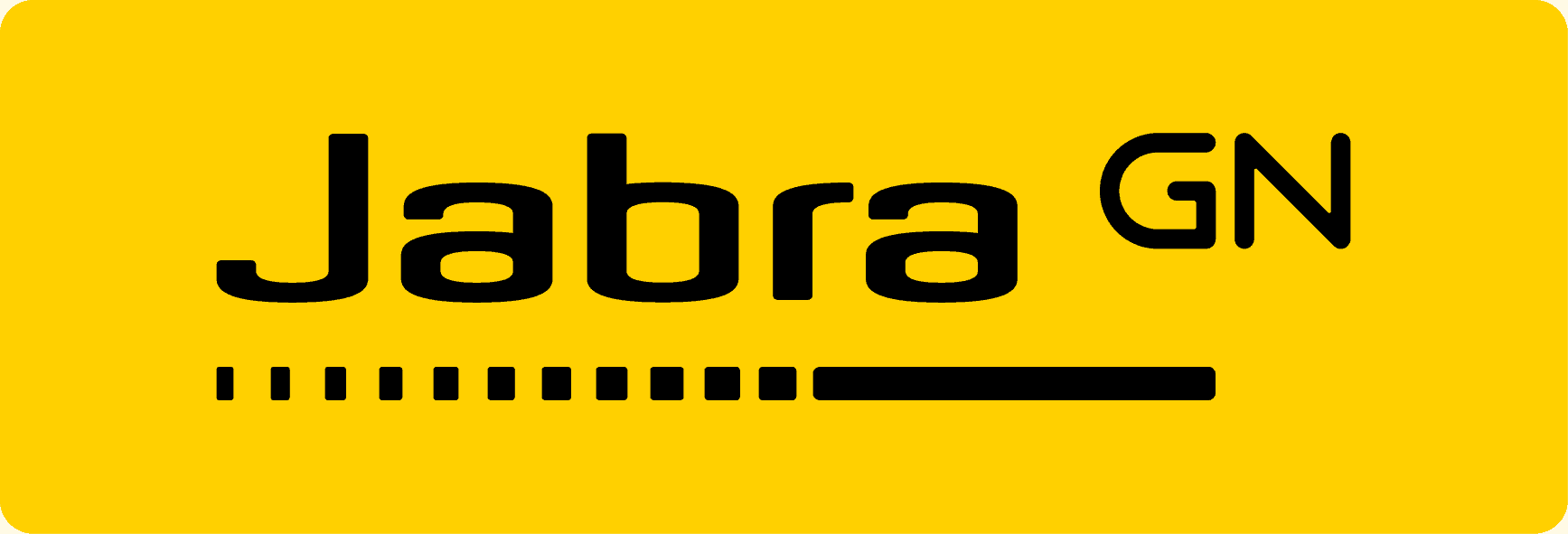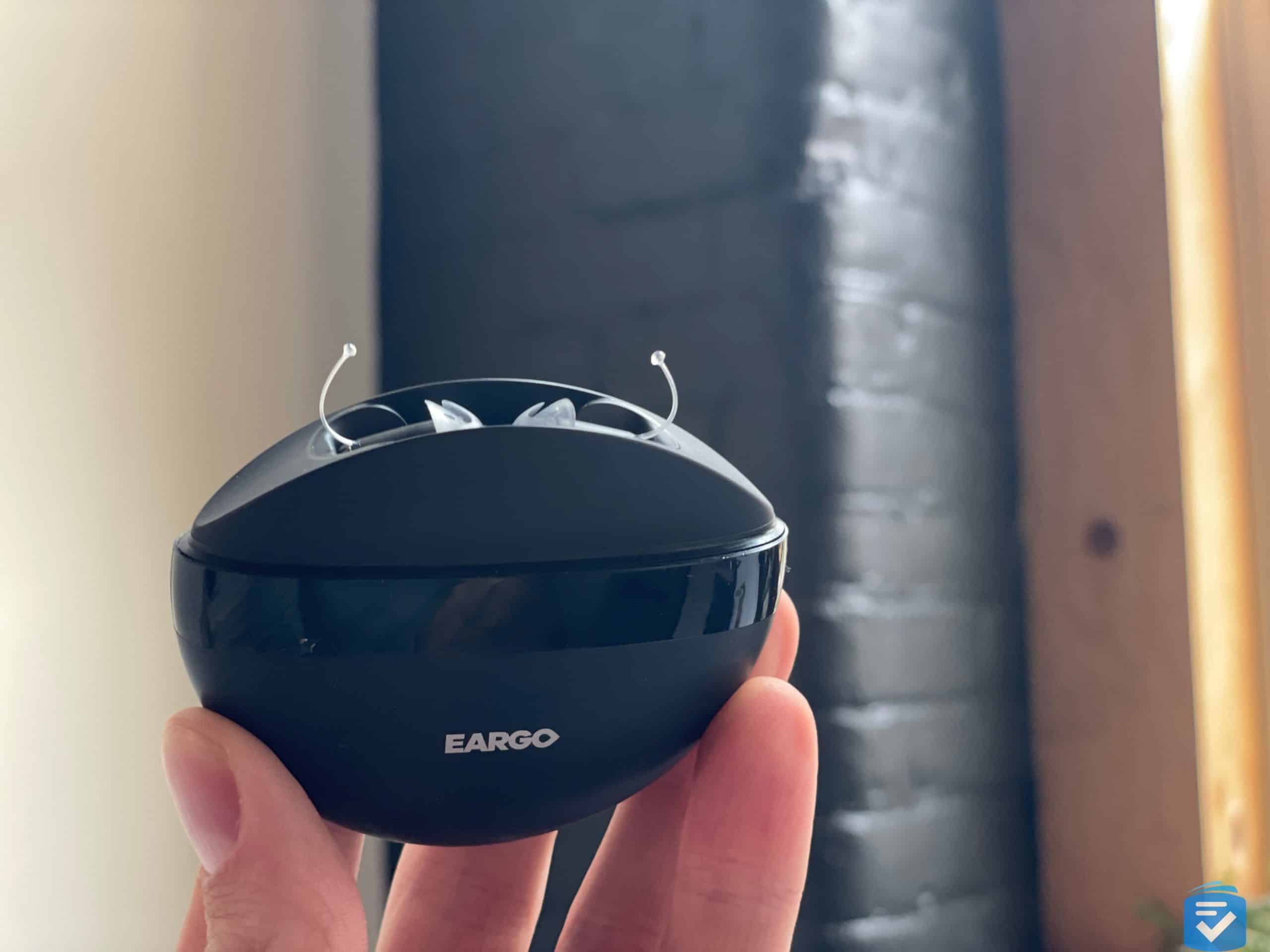Signia vs. ReSound Hearing Aids: Our Hands-On Comparison
Signia and ReSound are premium hearing aid brands, each with distinctive strengths. ReSound pioneered Bluetooth connectivity and has created an ecosystem of accessories that enhance real-world performance. Signia offers industry-leading tinnitus management and nearly invisible styles that appeal to users who want discreet hearing aids.
Both manufacturers deliver exceptional sound quality that rivals the best hearing aids of the year, each with different technological approaches. Our comprehensive review highlights the pros and cons of each brand, depending on your hearing needs, lifestyle priorities and ongoing service and support preferences.
Helpful Resource: Explore your hearing aid options with greater confidence with help from our in-depth guide to hearing aids.
Key Findings
- ReSound pioneered direct iPhone connectivity in hearing aids and continues to offer advanced Bluetooth features, including Auracast.
- Signia is a great choice for those experiencing tinnitus. The brand offers sophisticated tinnitus management through its proprietary Notch Therapy.
- Both brands provide premium sound processing. ReSound focuses on environmental awareness and Signia emphasizes speech clarity.
- ReSound offers accessories that extend functionality in challenging environments, such as lecture halls and restaurants.
- Signia’s Active Pro IX model features a contemporary earbud design that appeals to users concerned about the appearance of traditional hearing aids.
- Both manufacturers require professional fitting through audiologists or hearing care specialists. Prices typically range from $2,800 to $6,358 per pair.
Budget-Friendly Tip: If you’re experiencing mild to moderate hearing loss and looking for a more affordable option, consider over-the-counter hearing aids!
Signia vs. ReSound

|
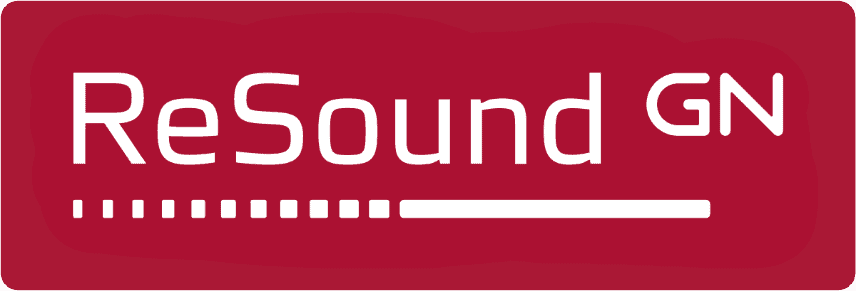
|
|
|---|---|---|
| Editor's Ratings | ||
| Price range | $2,000 to $7,000 per pair | $2,000 to $7,000 per pair |
| Style options | RIC, BTE, ITE, ITC, CIC, earbud-style | RIC, BTE, ITE, ITC, CIC, RIE, microRIE, earbud-style |
| Bluetooth streaming | Yes (most models) | Yes (most models) |
| Battery type | Rechargeable or disposable | Rechargeable or disposable |
| Warranty | 2 years standard | 1 to 4 years, depending on model |
| Trial period | Varies by provider (typically 30 to 45 days) | Varies by provider (typically 30 to 45 days) |
| Remote support | Available through the Signia app | Available through the ReSound Smart 3D and ReSound Smart app |
| App control | Signia app (iOS and Android) | ReSound Smart 3D and ReSound Smart app (iOS and Android) |
| Purchase method | Through licensed hearing professionals | Through licensed hearing professionals |
| Hearing loss range | Mild to profound | Mild to profound |
| Tinnitus management | Advanced (Notch Therapy) | Standard masking features and app (ReSound Tinnitus Relief) |
| Contact | ||
| Website |
Signia Hearing Aids Overview
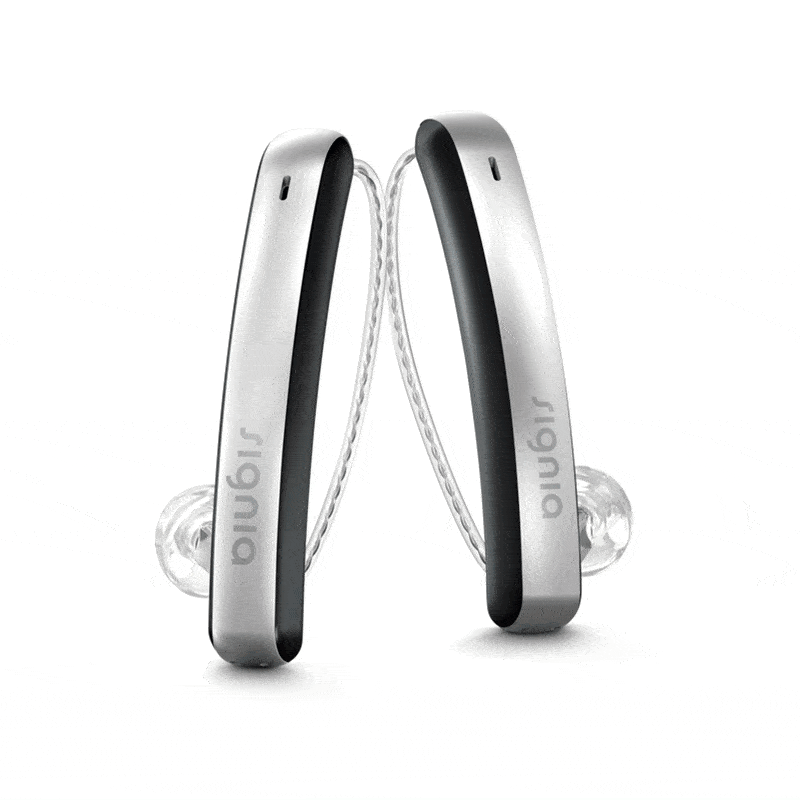
Signia has roots stretching back nearly 120 years. Currently part of WS Audiology (which also owns Widex and several other hearing brands), Signia focuses on creating sophisticated hearing solutions with contemporary designs.
The current Signia lineup centers on their Integrated Xperience (IX) platform. It can process an impressive 192,000 data points per second and features a multistream architecture that tracks and amplifies multiple speakers simultaneously.
Signia’s product line includes several models designed for different user priorities.
- Styletto IX: A slim, stylish receiver-in-canal (RIC) device with rechargeable batteries
- Pure Charge&Go IX: A versatile RIC model with physical volume buttons and excellent battery life
- Silk IX: A ready-to-wear completely-in-canal (CIC) option that doesn’t require custom molding
- Active Pro IX: A unique prescription hearing aid that resembles contemporary wireless earbuds
- Insio IX: Custom-fitted in-the-ear (ITE) devices for personalized comfort
What truly distinguishes Signia is its advanced Own Voice Processing 2.0 technology, which processes the wearer’s voice separately from environmental sounds. This approach ensures that users hear their own voice naturally, unlike many competing devices that can make wearers sound unfamiliar to themselves.
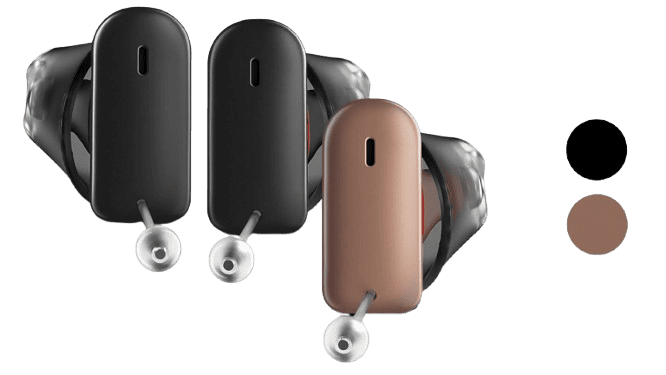
Credit: Signia
Signia also leads the industry in tinnitus management through its proprietary Notch Therapy. Unlike standard masking approaches, the treatment helps train the brain to ignore tinnitus sounds. This could provide more complete relief from tinnitus symptoms.
Pro Tip: All Signia hearing aids must be fitted by licensed hearing-care professionals, although their Silk model offers a unique ready-to-wear design that simplifies the fitting process.
ReSound Hearing Aids Overview
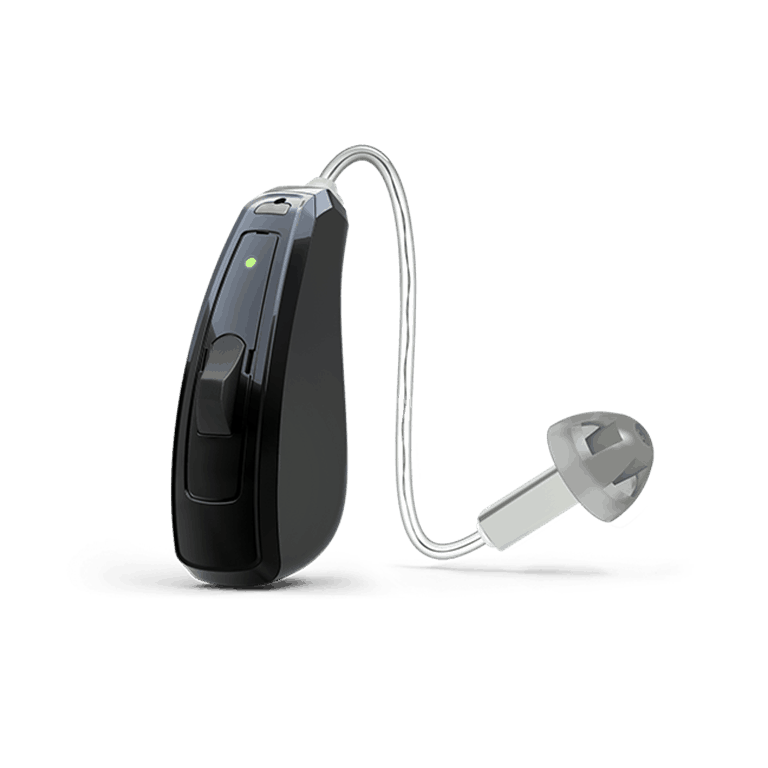
ReSound has built its reputation as a pioneer in connectivity features, and continues to push the envelope with each generation of devices. The brand’s Organic Hearing allows for natural listening experiences through advanced directional microphone systems. The technology also helps users maintain awareness of their surroundings while simultaneously focusing on speech.
The company’s current product lineup offers several devices with advanced technology built in.
- Vivia: A micro-receiver-in-ear (microRIE) device featuring Deep Neural Network (DNN) AI
- Savi: A more accessible RIE option with advanced features such as Auracast compatibility
- Nexia: The first hearing aid to integrate Bluetooth LE Audio and Auracast technology, available in multiple styles
- Omnia: A device available in multiple styles that provides speech clarity in noisy environments and excellent background noise management
- Linx Quattro: A reliable device with excellent music reproduction capabilities and multiple styles to choose from
The newest ReSound models feature Auracast technology, which allows users to receive audio broadcasts directly from public venues. It could transform accessibility in theaters, conference halls and other public spaces.
ReSound also offers an impressive accessory ecosystem. The Multi-Mic+ extends hearing range in challenging environments such as lecture halls and restaurants. During our tests, they outperformed similar accessories from competitors. Their TV Streamer+ also delivers good audio quality for television viewing without latency issues.
Similar to Signia, ReSound devices must be purchased through licensed hearing-care professionals to provide personalized fittings and ongoing support.

Performance Comparison
Let’s dive into how these premium hearing aid brands compare performance-wise.
Sound Quality and Processing
Both manufacturers deliver exceptional sound quality, but they approach sound processing with different priorities.
Signia’s IX platform emphasizes speech clarity through its multistream architecture, which can successfully follow and amplify multiple speakers simultaneously. The technology is great for group conversations, since it can help users track different voices even as speakers move or overlap. The dynamic soundscape processing delivers natural sound while maintaining excellent speech understanding in all situations, even when active.
ReSound’s approach centers on creating more natural, immersive listening experiences. Their models with AI-driven processing help them maintain environmental awareness. ReSound devices can also help preserve the richness and nuance of complex audio, making them an excellent choice for music lovers.
Did You Know: A study from the JAMA Network found that 96.2 percent of adults experience hearing loss of some degree by age 90.1
Environmental Adaptability
Signia’s acoustic-motion sensors offer enhanced situational awareness and can automatically adjust settings based on movement and acoustic conditions. We found it helpful when transitioning between different environments, such as moving from a quiet office to a bustling street. In our experience, Signia hearing aids can quickly adapt to quiet conversations, noisy restaurants and outdoor settings.
ReSound’s adaptability is due to the brand’s directional microphone systems and noise-reduction technology. We observed that their latest models performed well in restaurant settings. We could clearly hear our conversation at the table, while still maintaining awareness of background noise. That is not always the case with some brands.
Connectivity Features
ReSound, a pioneer in Bluetooth connectivity in hearing aids, continues to live up to its title with tech that connects seamlessly and consistently across Apple and Android devices. We were able to maintain a stable connection even when switching among multiple audio sources.
Signia also offers connectivity technology, although it leans more toward platform-specific performance. Their newest models incorporate Bluetooth compatibility and connect reliably to smartphones, but we found that it isn’t as seamless as ReSound’s universal approach.
Both brands offer accessories for streaming TV audio. The ReSound TV-Streamer 2 can connect to televisions, computers and music systems, and the ReSound TV-Streamer+ supports Bluetooth Auracast for Nexia wearers. Signia’s TV Sound, on the other hand, delivers Dolby Digital sound quality to its Bluetooth-enabled hearing aids.
Battery Performance
Both Signia and ReSound offer disposable and rechargeable battery-powered devices, and both brands offer portable charging cases.
We found that the average ReSound rechargeable devices lasted up to 30 hours of typical use and up to 20 hours when streaming. Signia, on the other hand, offers a wider range of battery life, with some models lasting about 60 hours with or without streaming.
Both manufacturers’ rechargeable models typically require about three or four hours for a full charge, although quick-charge features can provide several hours of use after just 30 minutes of charging.

Specialized Hearing Needs
Signia holds a clear advantage with its proprietary Notch Therapy for tinnitus management. Unlike standard masking approaches that use white noise to cover tinnitus sounds, Notch Therapy helps train the brain to ignore them. According to the American Tinnitus Association2, approximately 50 million American adults have experienced tinnitus symptoms that last at least five minutes in the past year. That makes this feature particularly valuable for many users.
ReSound excels at addressing more severe hearing loss through powerful, specifically designed models. Their CROS/BiCROS capability helps people with single-sided deafness, significantly improving spatial awareness and speech understanding. The technology allows users to hear sounds from their deaf side through the hearing aid in their functioning ear.
Features Comparison
Now let’s compare these premium hearing aid brands’ features and technologies.
Audio Processing Technology
Signia’s IX platform processes 192,000 data points per second, enabling sophisticated sound analysis and enhancement, while Own Voice Processing 2.0 technology processes the wearer’s voice to ensure that it sounds natural and familiar.
ReSound’s audio processing focuses on the Deep Neural Network technology in their Vivia models, which delivers significantly improved speech clarity in crowded spaces. The Intelligent Focus feature responds to the direction a person is looking, prioritizing sounds based on the user’s natural attention, creating a more intuitive listening experience that doesn’t feel artificially manipulated.
Mobile Applications
Both brands offer sophisticated smartphone apps to help users control and customize their experience.
Signia’s app provides comprehensive functionality for both iOS and Android devices.
- Volume adjustments, directional hearing and program selection
- Hearing aid status monitoring (battery life, connection)
- Virtual appointments with hearing care professionals
- Track steps, activity, wear time and more
- 24/7 virtual assistance
ReSound offers three apps: ReSound Smart 3D, ReSound Smart and ReSound Relief.
- ReSound Smart 3D allows users to personalize and control specific devices, access ReSound Assist and use the Check My Fit feature.
- ReSound Smart enables easy fine-tuning of specific devices.
- ReSound Relief offers sound therapy, exercises, guidance and meditation to help relieve tinnitus.
Accessory Ecosystems
Both manufacturers offer extensive accessories that extend hearing aid functionality beyond basic hearing improvement.
Signia’s accessory lineup includes:
- TV Sound and StreamLine TV for connecting hearing aids to TV audio
- MiniPocket remote control for discreet adjustments
- StreamLine Mic for hands-free calls and music streaming
- Various charging options, including portable cases
- EarWear 3.0 collection for customized comfort
ReSound’s comprehensive accessory ecosystem features:
- Multi-Mic+, Multi-Mic and Micro Mic for extended hearing range
- TV Streamer+ and TV Streamer 2 for television audio with virtually no latency
- Phone Clip+ for enhanced phone communication
- Remote controls for discreet, easy use
- Various charging options for different device models
Specialized Features
Signia’s standout specialized feature is its proprietary Notch Therapy for tinnitus management. ReSound’s specialized features include Auracast compatibility in newer models, allowing direct connection to public audio systems. ReSound Nexia CROS/BiCROS technology improves spatial awareness and better speech understanding for users experiencing single-sided deafness.
FYI: A study from 20223 estimated that 0.25 percent of adults ages 60 to 79 (roughly 155,000 individuals) experience single-sided deafness.
Both manufacturers incorporate directional microphone systems that help isolate speech in noisy environments, although they implement the technology differently. Signia’s Binaural OneMic Directionality 2.0 provides enhanced listening comfort in loud environments, while ReSound’s Binaural Directionality III focuses on delivering a Better Ear/Situational Awareness metric (BESA).
Pricing Comparison
Hearing aids are an investment, especially when you’re considering premium brands like Signia and ReSound. Let’s explore their pricing structures.
Price Ranges
Based on market research and consultation with audiologists, Signia hearing aids typically cost between $2,000 and $7,000 per pair, depending on the model, technology level and features. We found that the Pure and Silk models tend to be the more affordable options, while premium models such as the Styletto IX and Active Pro IX can be more expensive.
ReSound hearing aids also generally range from $2,000 to $7,000 per pair. Their newest Vivia models typically fall toward the higher end of that range, while established platforms such as Linx Quattro may be available at more moderate price points.
Generally, we recommend booking a consultation with an audiologist rather than attempting to find the best bargain online.
What Influences Cost
Several factors affect the final price for both brands.
- Technology level: More advanced features and processing increase the cost.
- Style selection: Custom and smaller devices typically cost more than standard behind-the-ear (BTE) models.
- Bundled services: Many providers include follow-up visits and adjustments in the purchase price.
- Geographic location: Prices vary by region and provider.
- Warranty length: Extended warranties may increase the initial purchase price.
Both brands sell through hearing-care professionals, so neither publishes standardized pricing online. Since health-care professionals set their pricing structures, you may find significant price variations for identical models among different providers.
Payment Options
High costs could make hearing aids less accessible. Fortunately, most hearing-care providers offer financing plans that allow users to make monthly payments rather than pay the full amount up front. According to the National Institute on Deafness and Other Communication Disorders,4 approximately 28.8 million U.S. adults could benefit from using hearing aids, yet fewer than one-third of them have ever used the devices. Cost could be a contributing factor to those findings.
Insurance coverage for hearing aids varies widely by provider and plan. Traditional Medicare doesn’t typically cover hearing aids, although some Medicare Advantage plans include hearing benefits. When purchasing through an audiologist, always inquire about insurance billing options and potential discount programs.
FYI: Looking for more budget-friendly hearing aid options? For those with mild to moderate hearing loss, consider exploring over-the-counter options such as Eargo and Jabra Enhance.
Warranties and Support
The warranty protection and ongoing support offered by manufacturers and providers significantly impact the long-term value of hearing aid investments.
Signia Warranty Structure
Signia offers a standard two-year warranty for their hearing aid casings, shells and CROS transmitters, covering:
- Manufacturing defects and material failures
- International repair services through their global network
- Service at any authorized Signia provider
The warranty provides basic protection against defects, but it doesn’t necessarily include coverage for loss or damage unless it’s added explicitly by the provider. After the warranty period expires, repairs incur standard service fees through Signia’s repair centers.
ReSound Warranty Structure
ReSound’s warranty terms vary by provider, but they typically include:
- One- to four-year manufacturer warranty (varies by provider and model)
- Coverage for repairs and replacement will be listed in the model’s individual warranty
- Service through any authorized ReSound provider
ReSound’s global warranty coverage proves particularly valuable for frequent travelers. Authorized providers in different countries can perform basic services under warranty, but some may charge consultation fees.
Ongoing Support
Both brands emphasize the importance of professional fitting and ongoing support through their provider networks. Virtual support, remote assistance and access to care are available through both brands’ mobile apps.
Signia offers remote support through its app’s TeleCare feature. The feature allows hearing care professionals to monitor usage and make adjustments without the need for in-person visits, which is valuable for users with mobility challenges or those living in rural areas.
ReSound provides similar remote support through their Smart 3D app’s ReSound Assist Live feature, which enables follow-up adjustments via video calls. The company has a wide network of providers to ensure consistent availability.
Trial Periods
Both manufacturers offer trial periods that allow users to test their devices in real-world conditions, although the trial lengths vary depending on the provider. Trials typically last 30 to 45 days.
In our experience, evaluation periods can really help first-time hearing aid users adjust to amplified sound and determine if a specific model meets their needs.
Bottom Line
Signia and ReSound are excellent choices in the premium hearing aid market. Each has distinctive strengths that may appeal to different needs, lifestyles and preferences.
Consider Signia if you:
- Experience tinnitus and need advanced management features
- Prioritize a modern, stylish design that doesn’t look like a traditional hearing aid
- Find that your own voice sounds unnatural when using other hearing aids
- Prefer devices that focus primarily on speech clarity
- Want rechargeable technology with portable charging options
- Appreciate a ready-to-wear option that doesn’t require custom molding
Consider ReSound if you:
- Prioritize seamless connectivity with smartphones and other devices
- Need powerful amplification for severe to profound hearing loss
- Frequently use accessories like remote microphones for specific situations
- Appreciate natural sound quality with excellent spatial awareness
- Value adaptability across different listening environments
- Prioritize battery life and power management options
Both brands deliver exceptional performance for users seeking the most advanced hearing technology, but at premium price points. People with budget constraints may want to consider exploring more affordable alternatives, such as MDHearing or Jabra Enhance, which offer quality devices at significantly lower prices.
Our Methodology
Our comprehensive evaluation process for comparing Signia and ReSound hearing aids included:
- Hands-on testing: Both manufacturers’ devices were tested across multiple models in various environments, including quiet settings, restaurants, outdoor spaces and group conversations. Each device was worn for a minimum of 40 hours in real-world conditions.
- Technical analysis: Key performance indicators were assessed, including sound quality, battery life, Bluetooth connectivity, feedback management and app functionality using standardized testing protocols.
- Comparative evaluation: Using identical testing environments and criteria, Signia and ReSound models were compared against one another and other leading brands, including Oticon and Beltone.
- Expert consultation: Audiologists and hearing specialists who regularly fit both brands were interviewed to gather professional insights about performance, reliability and patient satisfaction.
- User experience analysis: We incorporated into our evaluation feedback from long-term users of both brands, spanning different age groups and hearing-loss profiles.
- Price research: Multiple providers were contacted to establish accurate price ranges and identify variations in service bundling and warranty terms.
Frequently Asked Questions
-
How do I decide if Signia or ReSound hearing aids are right for me?
The ideal choice depends on your specific hearing needs, lifestyle, budget and personal preferences. For people experiencing severe hearing loss, ReSound offers more comprehensive solutions, with powerful models specifically designed for those challenges. Signia’s focus is on mild to severe hearing loss. Signia is also the preferred choice for users struggling with significant tinnitus symptoms.
-
Where can I purchase Signia or ReSound hearing aids?
Both Signia and ReSound hearing aids must be purchased through licensed hearing-care professionals. Unlike direct-to-consumer brands like Eargo, these premium devices require professional fitting and programming. To find authorized providers, visit each manufacturer’s website and use their provider-locator tools.
-
How do the apps compare?
Both brands offer sophisticated smartphone apps with comprehensive features. ReSound’s Smart 3D app provides a more intuitive user experience with larger controls and clearer labeling, making it particularly accessible for less tech-savvy users. Signia’s app includes some unique features, such as the Check My Fit function that helps verify proper insertion.
-
Which brand offers better value?
Value depends on individual priorities and needs. For users who prioritize connectivity and accessory integration, ReSound typically provides better value. Those concerned with tinnitus management or aesthetic design may find greater value in Signia’s offerings.
-
Are these hearing aids visible when worn?
Both manufacturers offer various styles with different visibility profiles. Signia’s Styletto model features a particularly slim, stylish design, while their Active Pro model resembles contemporary wireless earbuds rather than traditional hearing aids. ReSound offers discreet options, particularly in their custom in-the-canal styles, but they haven’t emphasized fashion-forward design to the same degree as Signia.
